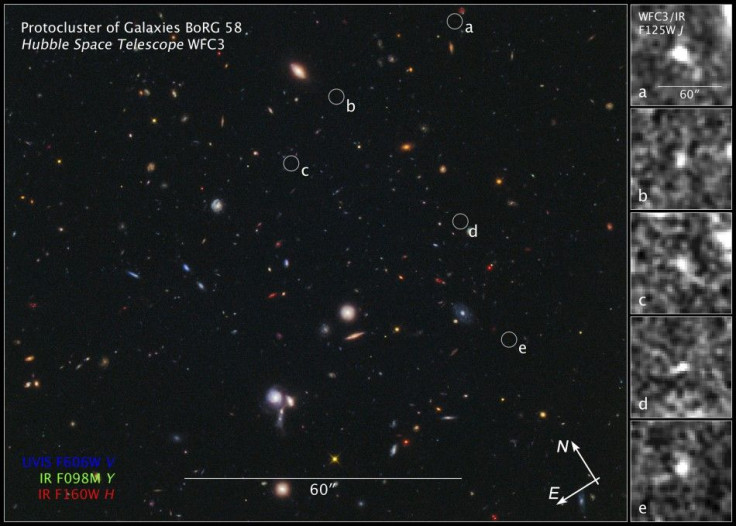Astronomers find monstrous baby galaxies 11.5 billion light-years away

These monstrous baby galaxies have been seen 11.5 billion light-years away through the Atacama Large Millimeter/submillimeter Array (ALMA). The finding is expected to give astronomers an insight into the formation of these galaxies as well as their evolution into the huge elliptical galaxies currently seen in modern universe.
Existing theories suggest that these monstrous galaxies form in concentrations of dark matter. Covered in dust, these are usually difficult to see in visible light. Though it emit strong radio waves with submillimeter wavelengths, but it cannot be identified with precision as radio telescopes lack the necessary resolution.
The discovery was made by a team of astronomers, led by Hideki Umehata, a postdoctoral fellow of the Japan Society for the Promotion of Science staying at the European Southern Observatory, Germany, using the ALMA. They observed SSA22, a part of the sky located in the Aquarius constellation, where they had earlier spotted signs of the very large galaxies through ASTE. ASTE is a 10-m submillimeter telescope operated by National Astronomical Observatory of Japan (NAOJ). With the help of ALMA, which has 60 times better resolution than ASTE, the astronomers have found the locations of nine extremely large galaxies, which they believe will help them understand the evolution of galaxies.
According to the Space Daily, the researchers have found the presence of a massive three-dimensional web of invisible dark matter in SSA22. The finding is based on the shape of the cluster, observed with the help of the Subaru Telescope. The galaxies appear to be located at the intersection of the dark matter filaments, says the report, citing the Astrophysical Journal Letters, issued on Dec 4, 2015.
The astronomers believe this to be an important finding towards understanding the relationship between the galaxies and dark matter. The team, also made up of Yoichi Tamura, an assistant professor at the University of Tokyo, and Kotaro Kohno, a professor at the University of Tokyo, plans to continue to search further in an effort to study the evolution of galaxies in the universe.
Contact the writer at feedback@ibtimes.com.au or tell us what you think below.





















